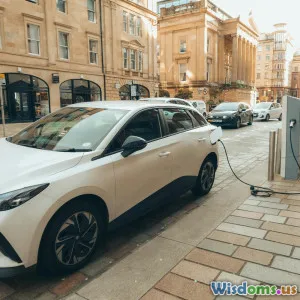
Government Incentives for Electric Cars
5 min read Explore the various government incentives promoting electric car adoption and their impact on the transportation landscape. (0 Reviews)
Government Incentives for Electric Cars
The global shift toward electric vehicles (EVs) is accelerating, driven by a profound need for sustainable transportation solutions. Governments around the world are playing a pivotal role in this transformation by implementing various incentives to encourage the adoption of electric cars. This article explores the types of government incentives available, their effectiveness, and how they are shaping the future of transportation.
What Are Government Incentives?
Government incentives for electric cars are financial and policy-driven mechanisms designed to encourage consumers and businesses to purchase EVs. These incentives can take various forms, including:
-
Tax Credits: Many governments offer tax credits that reduce the overall cost of purchasing an electric vehicle. For example, in the United States, buyers can benefit from a federal tax credit of up to $7,500, depending on the vehicle’s battery capacity.
-
Rebates: Direct rebates are often provided at the point of sale, allowing consumers to receive a discount on the purchase price of an EV. States like California have implemented rebate programs that can provide up to $2,000 off the purchase price.
-
Grants and Subsidies: Governments may offer grants to manufacturers or subsidies for charging infrastructure development, which helps reduce the overall cost of EV ownership.
-
Reduced Registration Fees: Some jurisdictions offer lower registration fees or waive them entirely for electric vehicles, making them more financially attractive.
-
Access to HOV Lanes: Certain regions allow electric vehicles to use High Occupancy Vehicle (HOV) lanes, providing time-saving benefits for EV drivers.
Why Are Government Incentives Important?
Government incentives are crucial in overcoming the barriers to EV adoption, such as high initial costs and limited charging infrastructure. By decreasing the financial burden, these incentives make electric vehicles more accessible to a broader audience, enhancing the market's growth.
Environmental Benefits
Incentives also contribute to environmental goals. By promoting the use of electric cars, governments aim to reduce greenhouse gas emissions, combat climate change, and improve air quality in urban areas.
Economic Growth
Investing in electric vehicle technology and infrastructure can stimulate economic growth. It creates jobs in manufacturing, installation of charging stations, and maintenance of electric vehicles.
Success Stories
Norway
Norway is often cited as a success story in electric vehicle adoption, with incentives that include no sales tax on EVs, free tolls, and access to bus lanes. As a result, over 54% of new car sales in Norway were electric in 2020.
California
California’s Clean Vehicle Rebate Project has significantly boosted EV sales in the state. Coupled with a strong charging infrastructure, California has become a leader in electric vehicle adoption in the United States.
Challenges and Considerations
While government incentives have proven effective, challenges remain. Some critics argue that these incentives disproportionately benefit higher-income individuals who can afford new EVs. Additionally, as the market matures, the need for incentives may decrease, leading to debates on whether these programs should continue.
Future of Electric Car Incentives
As the transportation landscape evolves, so too will government incentives. Future policies may focus on:
- Expanding incentives to include used electric vehicles.
- Developing infrastructure for charging stations in rural areas.
- Offering incentives for the integration of renewable energy sources into EV charging.
Conclusion
Government incentives for electric cars play a vital role in promoting sustainable transportation. By reducing financial barriers and supporting infrastructure development, these incentives are creating a greener future. As more consumers make the switch to electric vehicles, the continued evolution of these programs will be essential in achieving global environmental goals and fostering economic growth in the automotive industry.
Rate the Post
User Reviews
Popular Posts



















